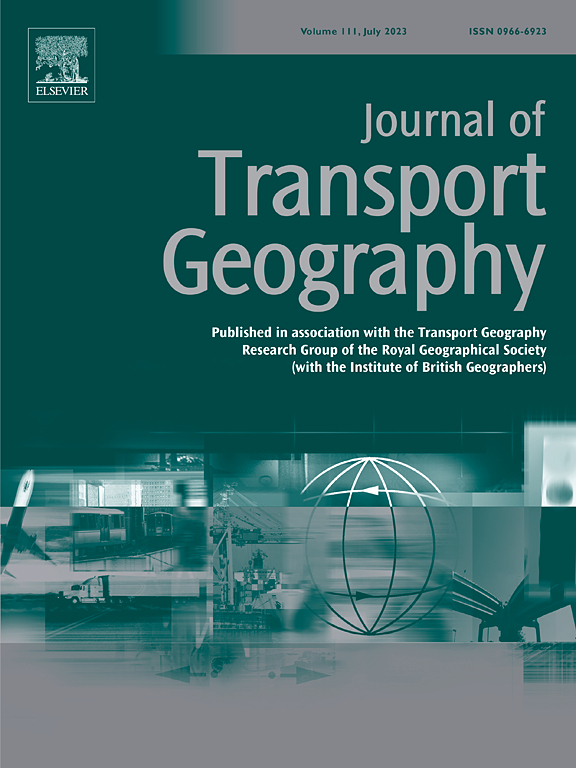Investigating dual-directional collective human mobility patterns of place-level incoming and outgoing travel behaviors using big data
IF 5.7
2区 工程技术
Q1 ECONOMICS
引用次数: 0
Abstract
Collective human mobility is an important phenomenon within defined geographic areas for specific mobility patterns. Studies have been conducted to understand human mobility patterns and the determinants, including the built environment, and socioeconomic factors. However, there is a dearth of systematic investigation focusing on the dual-directional nature of collective human mobility in places, referring to both incoming and outgoing mobility behaviors. This study addresses this gap by analyzing mobility density, dwell time, and trip distance of both incoming and outgoing travel behaviors using mobile phone big data in 165,181 census block groups in U.S. cities in 2019. As the results show, built environment features usually demonstrate greater explanatory power than socioeconomic variables, highlighting their vital roles in shaping human mobility. Specifically, built environment characteristics, including developed open space, population density, employment diversity, street intersections, walkability, transit service, and destination accessibility, are noticeably associated with collective mobility patterns in terms of incoming and outgoing density, dwell time, and distance. Socioeconomic variables, such as the proportion of older adults, Black individuals, household income, commuting mode choices are also significantly linked to specific mobility patterns. We also suggest policy implications for built environment interventions to support sustainable place-level human mobility.
求助全文
约1分钟内获得全文
求助全文
来源期刊

Journal of Transport Geography
Multiple-
CiteScore
11.50
自引率
11.50%
发文量
197
期刊介绍:
A major resurgence has occurred in transport geography in the wake of political and policy changes, huge transport infrastructure projects and responses to urban traffic congestion. The Journal of Transport Geography provides a central focus for developments in this rapidly expanding sub-discipline.
 求助内容:
求助内容: 应助结果提醒方式:
应助结果提醒方式:


